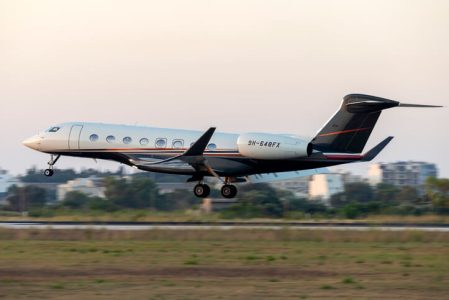Ground Effect Defined
Regarding fixed-wing aircraft, the definition of ground effect is the reduced aerodynamic drag that the wings of an aircraft generate when they are close to the ground (or water). This is primarily caused by the ground obstructing the creation of wingtip vortices which interrupts the downwash behind the wing.
Wingtip Vortices
A wingtip vortex is the circular motion of air around the tip of an aircraft’s wings. When flying at normal altitudes, these vortices are unrestricted and free to naturally expand. But when flying close to the ground, as in the flare for landing, the vortices can’t get as big because they impact the ground and dissipate. A reduction in vortices will reduce downwash and downwash will reduce drag. Have you ever floated during landing? This is probably why.
What Ground Effect Does as You Approach the Runway for Landing
As you approach the runway for landing, ground effect plays a crucial role:
- Provides more vertical lift, which counters weight.
- Provides less rearward lift, countering drag.
- Provides smaller vortices and less downwash, also reducing drag.
When Does Ground Effect Begin?
High and low wing aircraft react differently to ground effect for a very specific reason. Ground effect begins when you are within one wingspan of the surface and it becomes stronger as you get even closer to the runway due to the induced drag decreasing dramatically as these vortices dissipate. Since a low wing plane is inherently lower to the ground than a high wing, they will tend to float longer than their high wing counterparts. Low wing pilots should know this and plan for it.
Ground Effect Advantages and Disadvantages
Advantage
On a soft field takeoff, ground aeffect is good. It allows you to get airborne faster. Then by immediately lowering the nose to stay in ground effect, the airplane can accelerate to a safe flying speed instead of bouncing and bumping along the less-than-ideal runway to reach the same speed.
Disadvantage
On a relatively short runway, ground effect is bad (unless you are prepared and have that final approach speed nailed). Any excess speed on final will more than likely cause the airplane to float and float and float down the runway, setting up for a potential overrun situation.
The Bottom Line
Know thy airplane. Most pilots know that ground effect is a thing, but not all pilots plan and prepare for its occurrence. Know your approach speeds and stick to the book when landing on the shorter runways, especially in low wing aircraft. And, when necessary, let it help you on departure. Being aware is the best strategy for safe flying.
RELATED CTS TRAINING
RELATED CTS TRAINING









